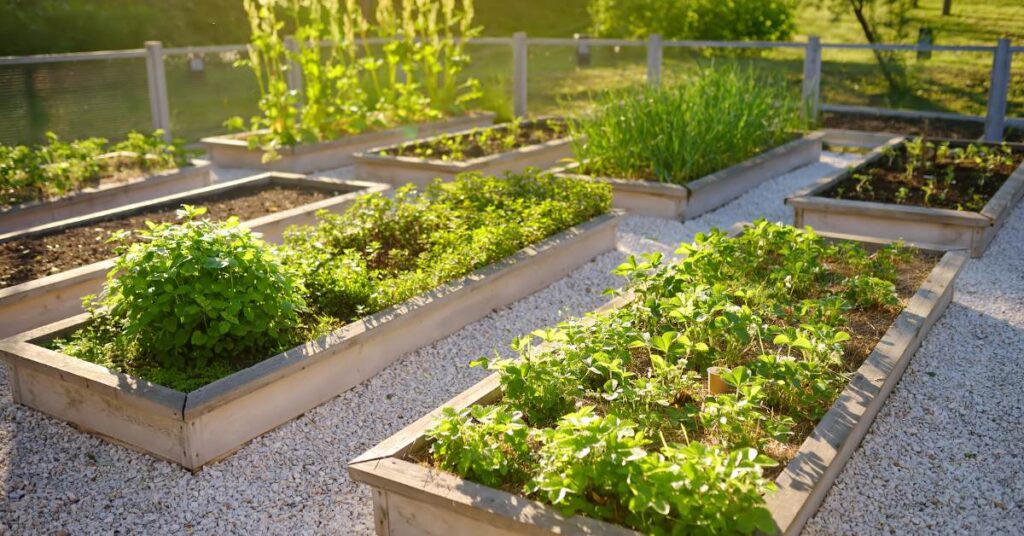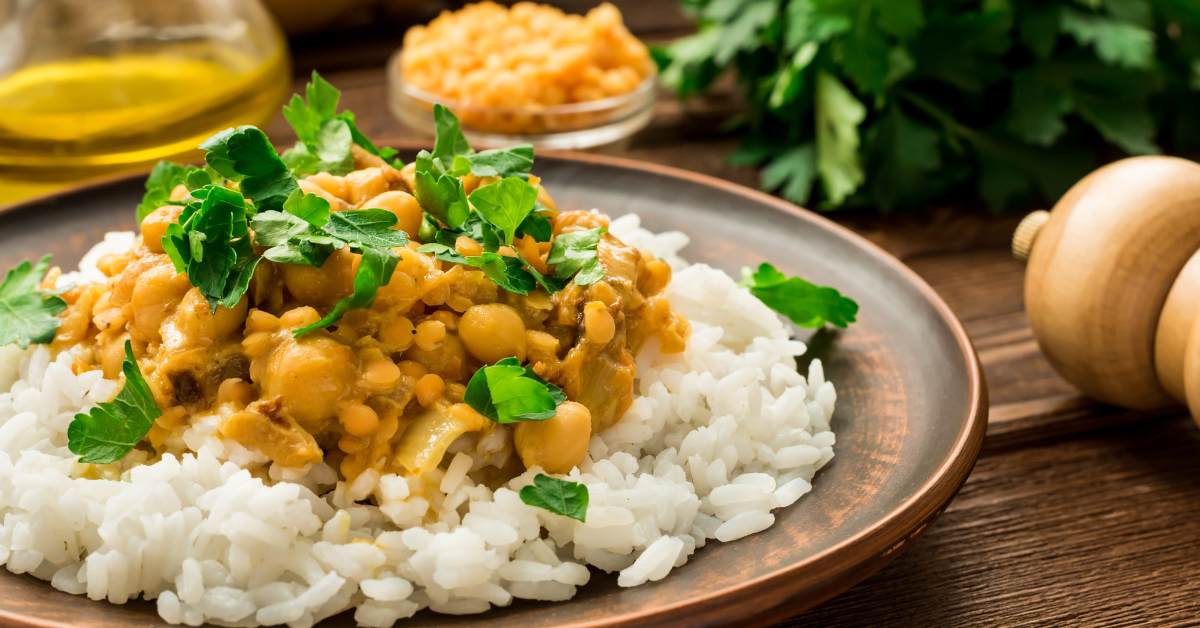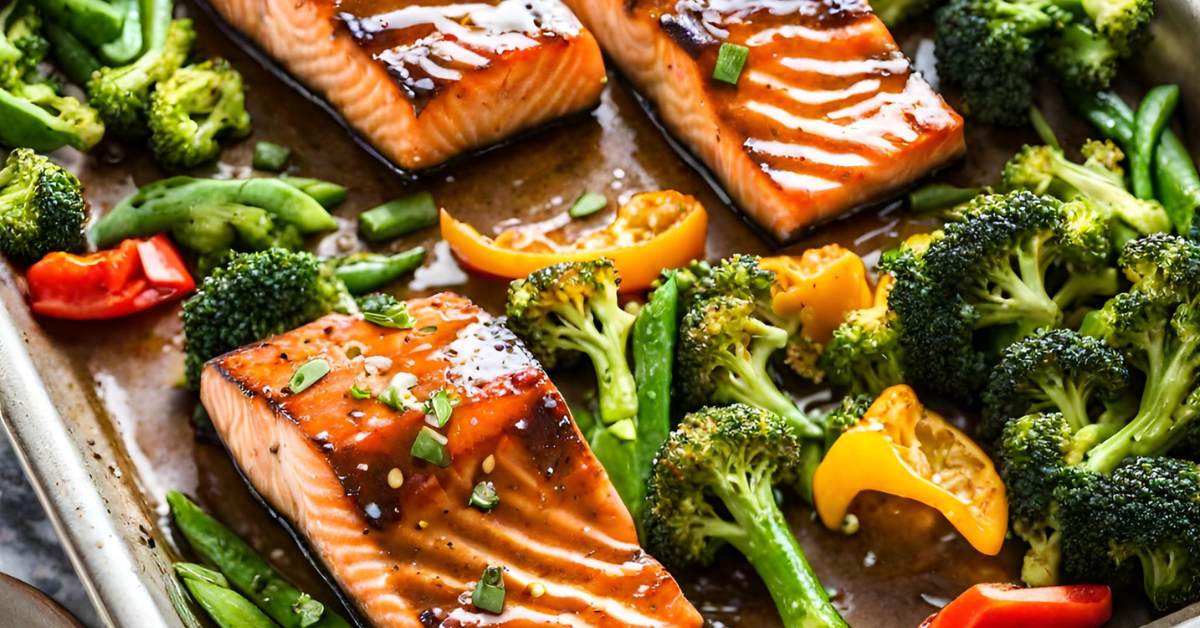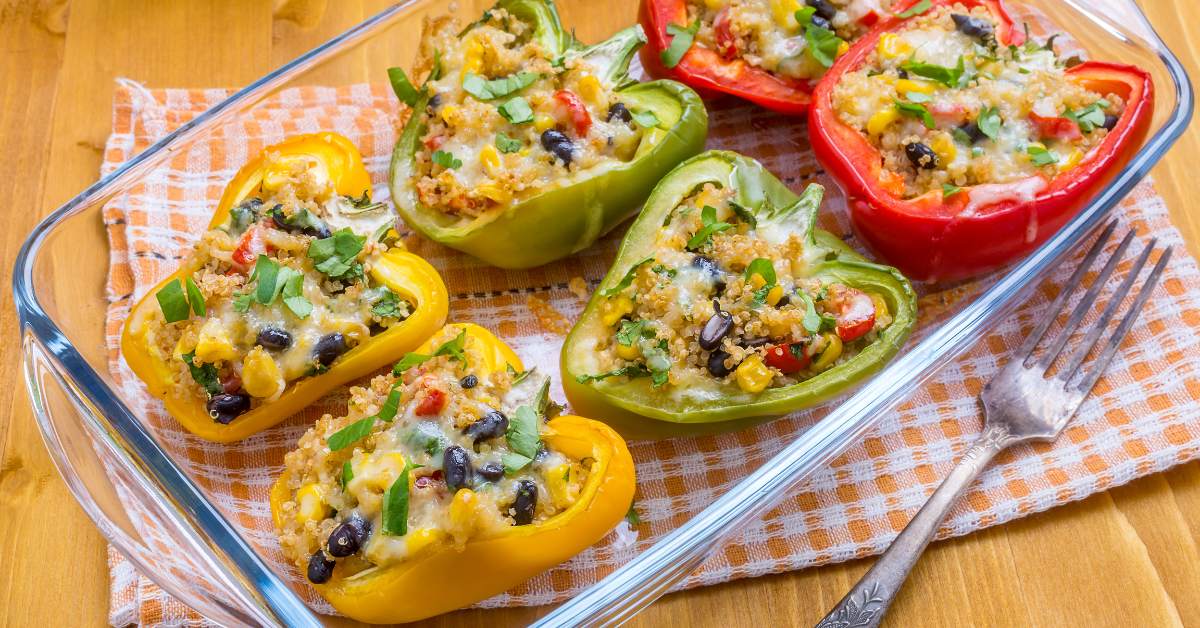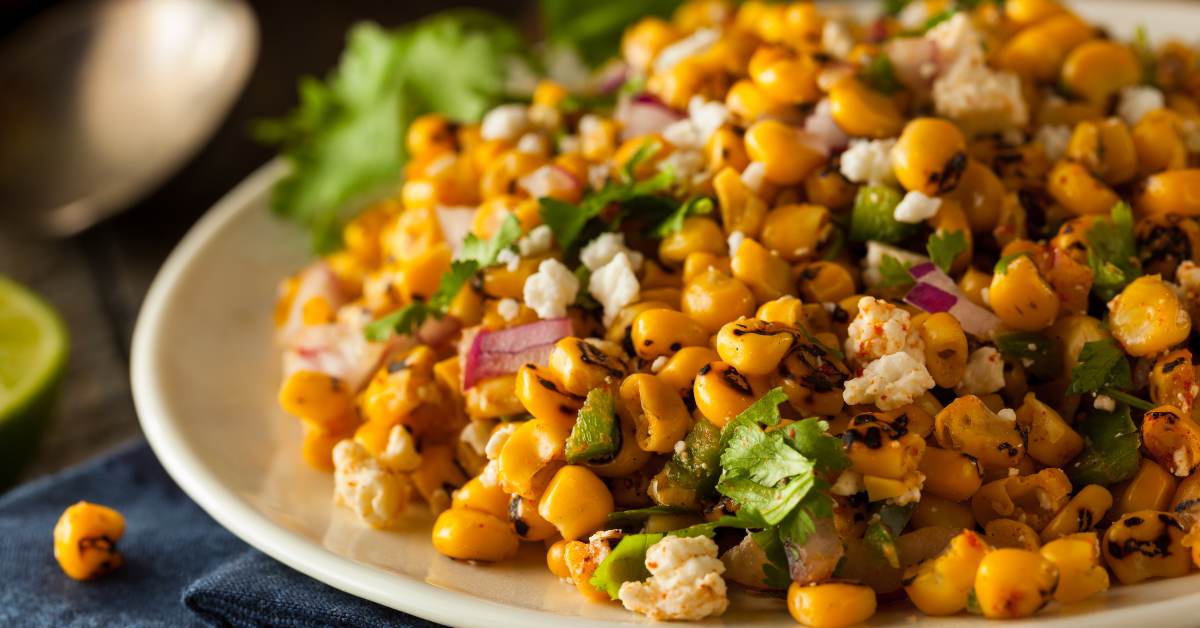With limited space, it’s essential to maximize every inch of your garden efficiently.
Let’s explore a few creative layouts tailored specifically for small vegetable gardens, ensuring that even the tiniest plots can yield bountiful harvests.
1. 20×20 Layout

A 20×20 layout provides a decent-sized garden plot, offering enough space for a variety of vegetables while still being manageable for beginners.
Divide the plot into rows or sections, leaving pathways for easy access. Consider planting larger crops like tomatoes and peppers towards the back, with smaller vegetables such as lettuce and herbs in the front for easy picking.
2. 4×8 Raised Beds
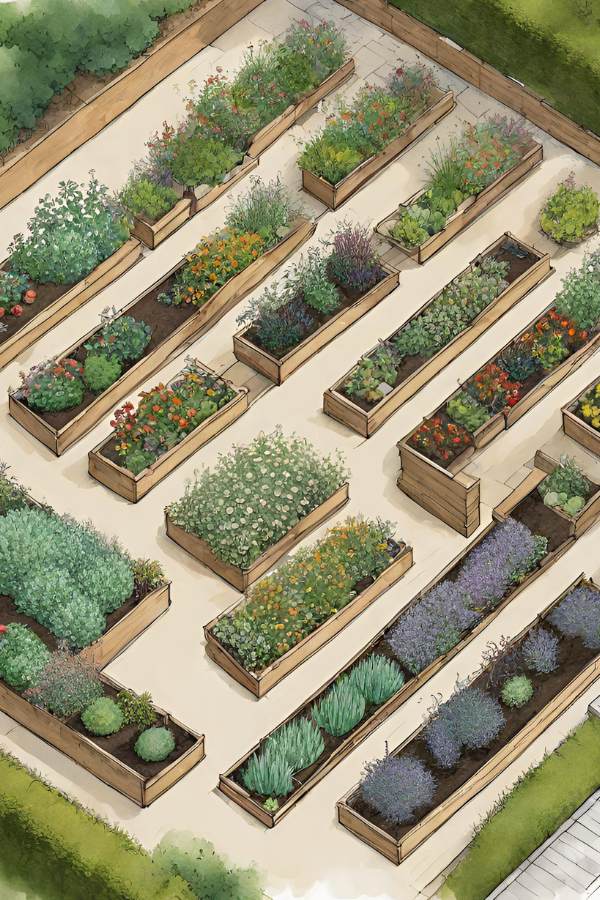
Raised beds are a popular choice for small gardens, offering better soil drainage, improved pest control, and easier maintenance. A 4×8 raised bed is an ideal size, allowing you to reach the center from either side without stepping into the bed.
Fill the raised beds with a nutrient-rich soil mix and plant a diverse selection of vegetables, maximizing yield in a compact space.
3. Compact Row Layout
In a compact row layout, vegetables are planted in narrow rows with minimal spacing between plants. This method maximizes the number of plants per square foot while still providing adequate airflow and sunlight.

Dream of Filling Your Pantry with Homegrown Staples?
Plan your garden with our FREE PRINTABLE—Staples Garden: What to Plant to Feed Your Family for a Year!
Consider using companion planting techniques to optimize space and naturally deter pests, creating a vibrant and productive garden.
4. Vertical Trellis Layout
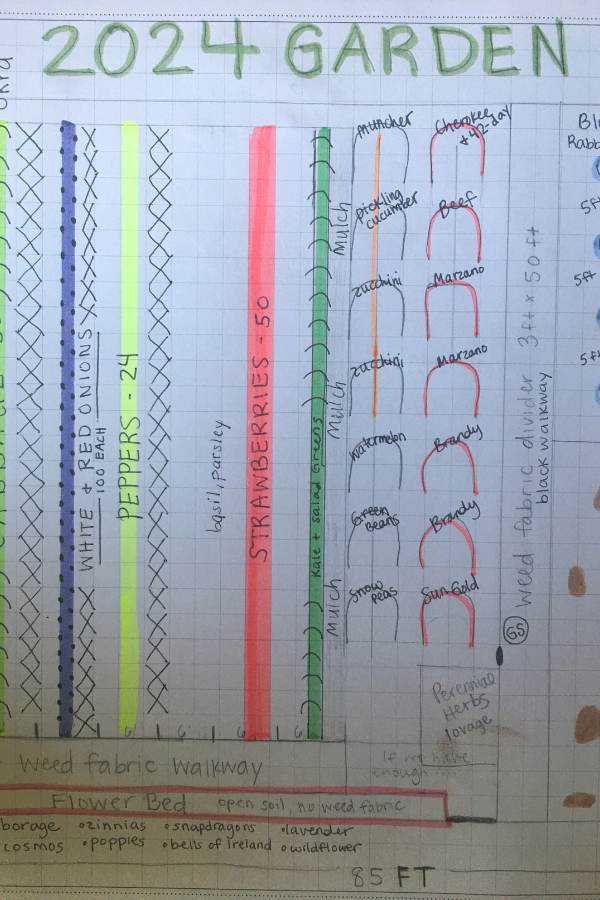
Vertical gardening is perfect for small spaces, utilizing walls, fences, or trellises to grow climbing vegetables like cucumbers, beans, and peas.
(That’s my garden layout above, and those upside down “U” shaped things are hoop-shaped trellises made out of cattle panels.)
Install trellises or stakes vertically and train the vines to grow upwards, saving valuable ground space. Vertical gardening not only maximizes space but also adds visual interest to your garden with lush greenery cascading upwards.
5. Container Garden Layout
Container gardening is a versatile option for urban dwellers or those with limited outdoor space. Utilize pots, buckets, or repurposed containers to grow vegetables on balconies, patios, or even windowsills.
Prices pulled from the Amazon Product Advertising API on:
Product prices and availability are accurate as of the date/time indicated and are subject to change. Any price and availability information displayed on [relevant Amazon Site(s), as applicable] at the time of purchase will apply to the purchase of this product.
Choose containers of varying sizes and shapes to accommodate different types of vegetables and herbs, creating a mini garden oasis in any available space.
6. 10×10 Garden Plot
A 10×10 garden plot offers a manageable size for small-scale gardening while still providing ample space for a diverse selection of crops.
Divide the plot into smaller sections or raised beds to organize your plants efficiently.
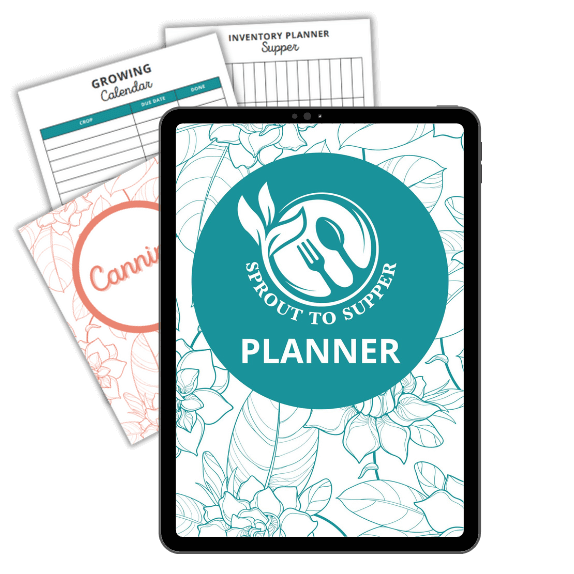
Simplify the Seed-to-Table Process
Create and track your custom, seed-to-table plan—with guidance from seasoned gardeners & preservers—inside the Sprout to Supper Planner.
Experiment with intercropping and succession planting to maximize productivity throughout the growing season, ensuring a steady supply of fresh produce.
7. 50 Sq. Ft. Layout
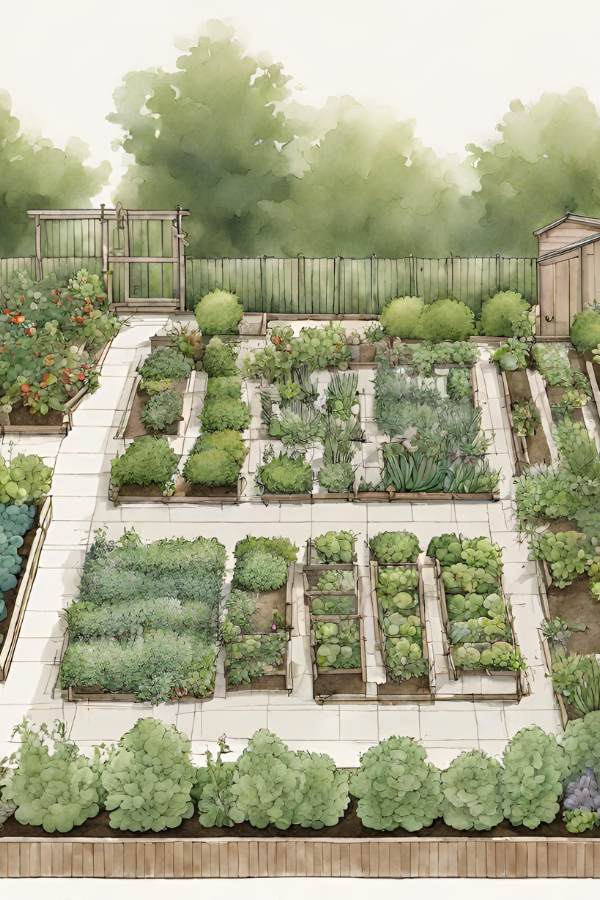
In a 50 square-foot garden, space optimization is key. Consider dividing the area into four raised beds, each measuring approximately 2.5 feet by 2.5 feet.
Leave narrow pathways between the beds for easy access and maintenance. Utilize vertical space by installing trellises or stakes for climbing vegetables like beans or cucumbers. Intercrop compatible plants within each bed to maximize yield and discourage pests.
With this layout, you can efficiently grow a diverse selection of vegetables in a small space while maintaining accessibility and productivity.
Tips for Maximizing Space in a Small Garden
To make the most of your small garden, practice seasonal rotation throughout the year.
Plant cool-season crops like lettuce, spinach, and peas in the spring and fall, reserving the warmer months for heat-loving vegetables like tomatoes, peppers, and squash.
By rotating crops seasonally, you can maximize productivity and minimize soil depletion, ensuring a continuous harvest.
You may also want to implement some intensive planting techniques, which will allow you to grow more vegetables in less space by closely spacing plants.
When doing this, consider intercropping, companion planting, and succession planting to make the most of your garden plot.
For example, plant fast-growing crops like lettuce or radishes between slower-growing ones like tomatoes or peppers to maximize space and harvests.
We hope these tips help you make the most your garden space this year!


